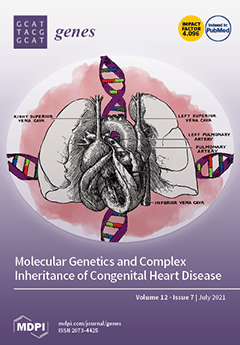In heterothallic basidiomycete fungi, sexual compatibility is restricted by mating types, typically controlled by two loci:
PR, encoding pheromone precursors and pheromone receptors, and
HD, encoding two types of homeodomain transcription factors. We analysed the single mating-type locus of the commercial
[...] Read more.
In heterothallic basidiomycete fungi, sexual compatibility is restricted by mating types, typically controlled by two loci:
PR, encoding pheromone precursors and pheromone receptors, and
HD, encoding two types of homeodomain transcription factors. We analysed the single mating-type locus of the commercial button mushroom variety,
Agaricus bisporus var.
bisporus, and of the related variety
burnettii. We identified the location of the mating-type locus using genetic map and genome information, corresponding to the
HD locus, the
PR locus having lost its mating-type role. We found the
mip1 and
β-fg genes flanking the
HD genes as in several Agaricomycetes, two copies of the
β-fg gene, an additional
HD2 copy in the reference genome of
A. bisporus var.
bisporus and an additional
HD1 copy in the reference genome of
A. bisporus var.
burnettii. We detected a 140 kb-long inversion between mating types in an
A. bisporus var.
burnettii heterokaryon, trapping the
HD genes, the
mip1 gene and fragments of additional genes. The two varieties had islands of transposable elements at the mating-type locus, spanning 35 kb in the
A. bisporus var.
burnettii reference genome. Linkage analyses showed a region with low recombination in the mating-type locus region in the
A. bisporus var.
burnettii variety. We found high differentiation between
β-fg alleles in both varieties, indicating an ancient event of recombination suppression, followed more recently by a suppression of recombination at the
mip1 gene through the inversion in
A. bisporus var.
burnettii and a suppression of recombination across whole chromosomes in
A. bisporus var.
bisporus, constituting stepwise recombination suppression as in many other mating-type chromosomes and sex chromosomes.
Full article






